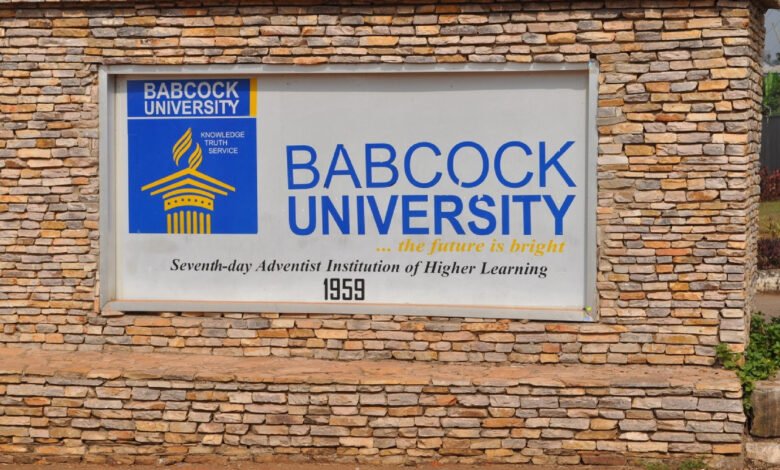When Institutions Fail the Child: How Babcock University and an Aggrieved Parent Mishandled a Crisis, And What Best Practice Demands

The recent controversy surrounding the alleged disappearance and eventual recovery of a student of Babcock University has once again brought to the fore an uncomfortable truth: the consistent failure of institutions and families to prioritize the best interest of the child. This incident, as publicly documented, is not only tragic in its unfolding but also deeply troubling in how it was handled, by both the aggrieved mother and the university. At the center of the storm is a child who, instead of being protected, has become the subject of public spectacle.
Note on Age and Protection
Although Babcock University has not disclosed the exact age of the student, unconfirmed reports circulating on social media suggest he is 15 years old. I am inclined to believe this is plausible—not only based on the mother’s emotional tone and urgency, but also because it is increasingly common in Nigeria for children to gain admission into university before turning 18. My own nephew, for instance, gained admission at 16, approaching 17.
Regardless of confirmed age, any child or young person under 18 must be afforded the full protection of the law, as enshrined in the Child’s Rights Act (CRA) of 2003. Institutions must treat such individuals as children—not according to academic placement, but according to their developmental needs and legal entitlements.
Even if, for the sake of argument, the student were not a child, another safeguard remains: the United Nations defines “youth” as individuals aged 15 to 24 (and in some contexts, up to 25). Thus, the student would still fall into a protected category of young person. This classification demands heightened sensitivity, not only because young people are still developing identity and decision-making capacity, but because our legal and institutional response must be reformatory and redemptive—not retributive.
Universities are not courts of public opinion. They are not called to dispense social backlash. Their duty is to protect, educate, and, if necessary, discipline, but only within boundaries that preserve dignity and promote rehabilitation.
It is, therefore, deeply alarming that Babcock University, a faith-based institution that professes to uphold moral and educational responsibility—chose to go public with personal details about the student. While the university claims that the mother’s public outcry violated established protocol and threatened its institutional image, its response was not only reactionary, but also legally and ethically unsound.
You cannot declare that an issue is under police investigation, a tacit admission that the child is now in conflict with the law, while simultaneously issuing public statements that disclose personal and identifying information. That is not just a breach of confidentiality; it is a direct violation of the legal obligations and moral duties owed to every child and youth in your care.
Some have argued that the mother herself had already revealed the child’s identity. Yes, but within the context of a missing person’s report, which is a public safety alert, not a criminal indictment. Once the matter transitioned into a police investigation, the legal protections under Sections 204–259 of the Child’s Rights Act (2003), titled “Child Justice Administration” were triggered. This section provides a comprehensive framework for handling cases involving children in conflict with the law, from the point of suspicion to final settlement. It leaves nothing to chance, recognizing the delicacy of such matters.
At the heart of this legal framework is the principle of diversion, ensuring that even in the gravest of circumstances, the approach must be accelerated, reformative, and child-centered. Most importantly, Section 205 expressly prohibits the publication or revelation of the identity of a child suspected to be in conflict with the law, in any format. This includes the child’s name, parents’ names, home address, school, or any detail that could directly or indirectly lead to the identification of the child.
Why is this important? Because identity protection is central to the reformatory spirit of the Child Justice System, a globally recognized doctrine. That shift in status, from “missing” to “alleged legal involvement” requires a corresponding shift in the institution’s posture: toward confidentiality, discretion, and strict adherence to due process. These are not options; they are non-negotiable standards.
This is not the first time we are witnessing such a breach. One must recall the recent case of a 17-year-old boy accused of armed robbery, detained in an adult prison, with his identity splashed across media platforms, even by those claiming to advocate for him. In these cases, the children are doubly violated, first by circumstance, then by the systems meant to protect them.
This Babcock University incident also underscores a broader systemic failure: many Nigerian tertiary institutions lack codified Child Safeguarding and Protection Systems. They behave as though university admission strips away childhood. It does not. If we cannot ensure protection for those under 18 in higher institutions, then perhaps we must revisit the policy of admitting children into them in the first place.
Still, the university cannot bear the weight of blame alone. Parents are the first custodians of a child’s development. When they falter, through neglect, indulgence, or poor judgment, they must also face social and legal accountability. But institutions that accept these young people must never wash their hands clean when trouble arises. Leadership is not proven by escaping the heat but by managing it with wisdom, courage, and structure.
If Babcock University, as a faith-based institution, seeks to uphold biblical values, then it must revisit the parable of the shepherd who left the ninety-nine in search of the one. The shepherd did not delegate the task. He took full responsibility. He bore the cost. So too must institutions that claim moral authority.
Yes, public image matters. But when placed beside the life and legal rights of a child or youth, alongside the clear directives of local laws, global conventions, and basic human decency, reputation must give way to responsibility.
Let this be a turning point, not just for Babcock University, but for all educational institutions. Let this be a moment of reckoning and reform. Let us codify child safeguarding and youth protection policies, translate them into actionable processes, and train every stakeholder from lecturers to janitors in how to uphold them.
Let us stop reacting. Let us start preparing.
The future of every nation rests on how well it protects its children and young people, not merely in rhetoric, but in systems.

